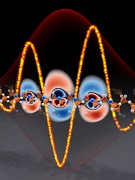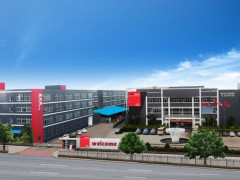
Light-induced electron movement to lead to high speed electronics
source:www.electrooptics.com/
keywords:
Time:2016-06-14

Future electronic systems have the potential to reach the oscillation speed of light waves, making them 100,000 times faster than current electronics.
The collaboration consists of researchers from the Max-Planck Institute of Quantum Optics, the Ludwig-Maximilians University Munich and the Technical University of Munich in Germany, in addition to theorists from the University of Tsukuba in Japan.
The physicists from the Laboratory for Attosecond Physics at the Max-Planck Institute of Quantum Optics have found that it is possible to manipulate the electronic properties of matter at optical frequencies.
The electromagnetic waves of light oscillate approximately one million times in a billionth of a second - at petahertz frequencies. The electric field of light is able to move electrons in solids at this speed, with electron movements forming the basis of electronics. Thus light waves could form the basis for future electronic switching once the induced electron motion and its influence on heat accumulation is precisely understood.
In a follow-up experiment the researchers shot extremely strong, femtosecond-laser pulses onto silicon dioxide glass. The full temporal characterisation of the light field after transmission through the thin glass plate now, for the first time, provides direct insight into the attosecond electron dynamics, induced by the light pulses in the solid material.
This measurement technique reveals that electrons react with a delay of some ten attoseconds (one attosecond is a billionth of a billionth of a second) to the incoming light. This time delay in the reaction determines the energy transferred between light and matter. Since it is now possible to measure this energy exchange within one light cycle, the parameters of the light-matter interaction can be understood and optimised to achieve the fastest speeds in signal processing.
To understand the observed phenomena and identify the best set of experimental parameters to that end, the experiments were backed up by a simulation method based on first principles developed at the Center for Computational Sciences at the University of Tsukuba. The theorists there used the K computer, currently the fourth fastest supercomputer in the world, to compute electron movement inside solids with unprecedented accuracy.
The researchers succeeded in optimising the energy consumption by adapting the amplitude of the light field. At certain field strengths energy is transferred from the field to the solid during the first half of the pulse cycle and is almost completely emitted back in the second half of the light.
These findings verify that a potential switching medium for future light-driven electronics need not overheat. The relationship between glass and light might provide an opportunity for dramatically accelerating electronic signal and data processing up to the oscillation speed of light.
Further Information
- RoboSense is to Produce the First Chinese Multi-beam LiDAR
- China is to Accelerate the Development of Laser Hardening Application
- Han’s Laser Buys Canadian Fiber Specialist CorActive
- SPI Lasers continues it expansion in China, appointing a dedicated Sales Director
- Laser Coating Removal Robot for Aircraft
 FISBA exhibits Customized Solutions for Minimally Invasive Medical Endoscopic Devices at COMPAMED in
FISBA exhibits Customized Solutions for Minimally Invasive Medical Endoscopic Devices at COMPAMED in New Active Alignment System for the Coupling of Photonic Structures to Fiber Arrays
New Active Alignment System for the Coupling of Photonic Structures to Fiber Arrays A new industrial compression module by Amplitude
A new industrial compression module by Amplitude Menhir Photonics Introduces the MENHIR-1550 The Industry's First Turnkey Femtosecond Laser of
Menhir Photonics Introduces the MENHIR-1550 The Industry's First Turnkey Femtosecond Laser of Shenzhen DNE Laser introduced new generation D-FAST cutting machine (12000 W)
more>>
Shenzhen DNE Laser introduced new generation D-FAST cutting machine (12000 W)
more>>
